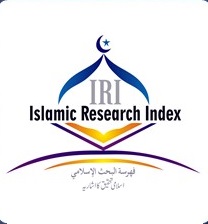Beyond Binary Distinctions: Reappraising the Intricate Nature of Apocrypha in the Sūtra Of Perfect Enlightenment
DOI:
https://doi.org/10.58932/MULF0012Keywords:
Buddhist apocrypha, Sūtra of Perfect Enlightenment, Śūraṅgama, fourfold meditation, Avikalpapraveśadhāraṇī, ZongmiAbstract
Factoring in historical records and philological intricacies, this study reconsiders the historical and cultural complexity underlying the development of the Sūtra of Perfect Enlightenment (SPE), a text previously categorized as a Chinese apocryphal scripture. With a broadened scope that transcends the conventional theories, the study explores the shared teachings and terminologies in the SPE and the Śūraṅgama, addressing their complex origins. The article proposes that the origins of such texts could involve multiple authors and a fusion of influences from Indian and Chinese thought, reflecting the spiritual and cultural contexts of their time. A pivotal focus is the detailed analysis of a unique four-stage meditation practice in the SPE, presenting compelling parallels with Indian Mahāyāna texts and suggesting a profound Indian lineage within this purportedly apocryphal Chinese scripture.
Despite its profound influence on the development of Huayen and Chan meditative practices, the Yuanjuejin (Sūtra of Perfect Enlightenment, hereafter “SPE” ) has been regarded by many scholars as a Chinese apocryphal text since the late 19th century, when Mochizuki Shinkō first proposed that the sūtra was forged in China with an identifiable doctrinal inclination found in another Chinese apocryphal Buddhist text, the Dasheng qixin lun (Awakening of Faith in the Mahāyāna, hereafter “Awakening of Faith”).[1] This direction of locating spurious and pseudo-Buddhist texts was soon picked up in Chinese academia, when Liang Qichao and Hu Shih began to look further into the clues to prove that the SPE, the Awakening of Faith, and the Śūraṅgama Sūtra (Lengyan jing) were all Chinese composition in the guise of Indian Buddhist texts. Regarding the SPE, Hu Shih speculates that the text was likely composed by Zongmi (748-841) who single-handedly popularized the text.[2] Lü Cheng, another very well-respected Buddhist scholar in China at the beginning of the 20th century, further proposed that the SPE was fabricated on the basis of other Chinese apocryphal texts, using the Awakening of Faith as the basis and further enriched by the contents of the Śūraṅgama Sutra.[3] In the West, James Benn also pointed out that “[o]ne might regard the Sūtra of Perfect Enlightenment, which has only one fascicle, as opposed to the Śūraṃgama’s ten, as a précis of the essential points of the Śūraṃgama.”[4]
[1] Mochizuki Shinkō. Bukkyō kyōten seiritsu shiron (On the History of the Establishment of Buddhist Canon). Kyoto: Horankan, 1946: pp. 509–12.
[2] Hu Shih, Hu Shih yanjiang ji (A Collection of Lectures by Hu Shih). Taipei: Hushi jinian guan, 1970.
[3] Lü Cheng, Zhongguo foxue yuanliu luejiang (Brief Lectures on the Origin and Development of Chinese Buddhism), Taipei: Liren shuju, 1985.
[4] James Benn, “Another Look at the Pseudo-Śūraṃgama sūtra,” Harvard Journal of Asiatic Studies, Vol. 68, No. 1 (June., 2008), p. 63.
References
Alter, Joseph S. “Āyurvedic Acupuncture – Transnational Nationalism: Ambivalence About the Origin and Authenticity of Medical Knowledge,” in Joseph S., Alter, ed. Asian Medicine and Globalization. Philadelphia: University of Pennsylvania Press, 2005: 21-44.
Benn, James. “Another Look at the Pseudo-Śūraṃgama sūtra,” Harvard Journal of Asiatic Studies, Vol. 68, No. 1 (June., 2008), 57-89.
Bentor, Yael. “Fourfold Meditations: Outer, Inner, Secret and Suchness,” in Henk Blezer, ed., Religion and Secular
Culture in Tibet. Leiden: E. J. Brill, 2002: 41-55.
Gregory, Peter N., Tsung-mi and the Sinification of Buddhism. Princeton: Princeton University Press, 1991.
Gregory, Peter N., (Trans). “The Sutra of Perfect Enlightenment,” in Apocryphal Scriptures (English Tripiṭaka Series), Berkeley: Numata Center for Buddhist Translation and Research, 2005: 43-126.
Hu, Shih. Hu Shih yanjiang ji (A Collection of Lectures by Hu Shih). Taipei: Hushi jinian guan, 1970.
Junjirō, Takakusu, Watanabe Kaigyoku, Ono Gemyo, et al., (Eds.) Taishō shinshū daizōkyō. Tokyo: Taishō Issaikyō
Kankō Kai, 1924-1934.
Kazunobu, Matsuda. “Nirvikalpapraveśadhāani: Sanskrit Text and Japanese Translation,” Bulletin of the Research Institute of Bukkyo University, No. 3 (March 1996): 89-113.
Kōshō, Kawamura, Yoshio Nishi, Kōshirō Tamaki, et al., (Eds.) Manji Shinsan Dainihon Zokuzōkyō. Tokyo: Kabushiki Kaisha Kokusho Kankōkai, 1975-1989.
Lü, Cheng. Zhongguo foxue yuanliu luejiang (Brief Lectures on the Origin and Development of Chinese Buddhism), Taipei: Liren shuju, 1985.
Mochizuki, Shinkō. Bukkyō kyōten seiritsu shiron (On the History of the Establishment of Buddhist Canon). Kyoto: Horankan, 1946: 509–12.
Robertson, Raymond E., (2007). A Study of the Dharmadharmatāvibhaṅga (Volume One): The Root Text and its Scriptural Source (the Avikalpapraveśadhāraṇī), with excerpts from Kamalaśīla’s Avikalpapraveśadhāraṇīṭīkā. Beijing: China Tibetology Publishing House.
Robertson, Raymond E., A Study of the Dharmadharmatāvibhaṅga (Volume Two): Vasubandhu’s Commentary and Three Critical Editions of Root Texts, with a Modern Commentary from the Perspective of the Rnying ma Tradition by Master Tam Shek-wing, translated and annotated by Henry C.H. Shiu. Beijing: China Tibetology Publishing House, 2008.
Yang, Wei-zhong, Yuanjue jing de zhenwei zhi zheng xinbian (A New Analysis on the Authenticity of the Sūtra of Perfect Enlightenment), Journal of Northwest University (Philosophy and Social Sciences Edition), 2016: 35-40.
Downloads
Published
How to Cite
Issue
Section
License
Copyright (c) 2023 South Asian Journal of Religion and Philosophy (SAJRP)

This work is licensed under a Creative Commons Attribution-NonCommercial 4.0 International License.









